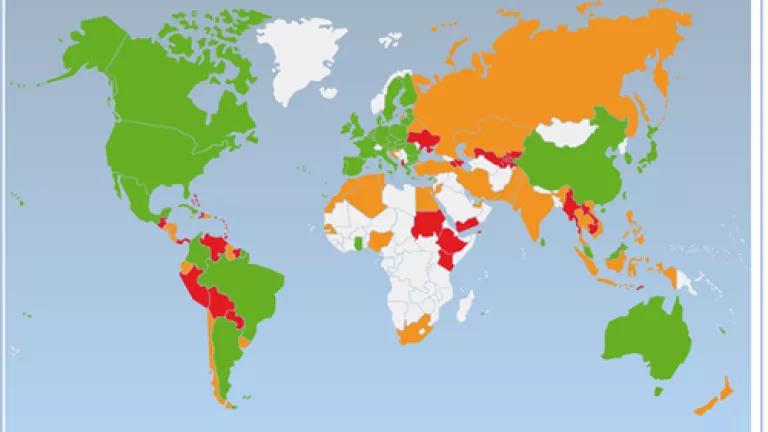More Countries Agree to Phase-out Inefficient Light bulbs at Rio+20: reducing global warming pollution

When people around the world turn on their lights, most of them waste energy and their money as their light bulbs meet outdated requirements for how much energy they can use. In the process they emit global warming pollution as their inefficient lights are often powered by carbon polluting sources of energy (although renewable electricity is a growing source of energy in many countries). So it is welcome news at Rio+20 that more countries have committed to phase-out inefficient light bulbs by 2016.
At Rio+20 fourteen countries joined a UNEP/GEF effort to phase-out inefficient light bulbs –called en.lighten – that works with countries to implement standards for the maximum amount of energy that they can use. These countries join the growing number of countries that have taken such action as the recent map from UNEP/GEF shows (see figure and clck on map to see an interactive en.lighten map with details on each country).
According to analysis from en.lighten, a transition to efficient lighting would result in annual worldwide savings of over US$ 110 billion and reduce carbon dioxide pollution by 490 megatonnes (Mt) per year—equivalent to the emissions of more than 122 million mid-size cars.
A growing number of countries are starting to realize these benefits and have passed laws or regulations to phase-out inefficient light bulbs. For example:
- a US law sets minimum energy efficiency levels for all light bulbs,
- the EU has passed a law requiring the phase-out of inefficient incandescent bulbs by 2012,
- Argentina has banned the import and sale of incandescent lights,
- Australia has already begun its phase-out of inefficient light bulbs, and
- Mexico has agreed to new efficiency standards for light bulbs with a ban on inefficient incandescent bulbs.
There are many light bulbs on the market that provide consumers huge energy savings while still providing the same type of lighting services and choices.
So these 14 countries are committed to join the growing number of countries that are phasing-out these inefficient light bulbs, saving their consumers money and reducing global warming pollution. This is a positive step which was one of our key climate and energy expectations for Rio+20.

